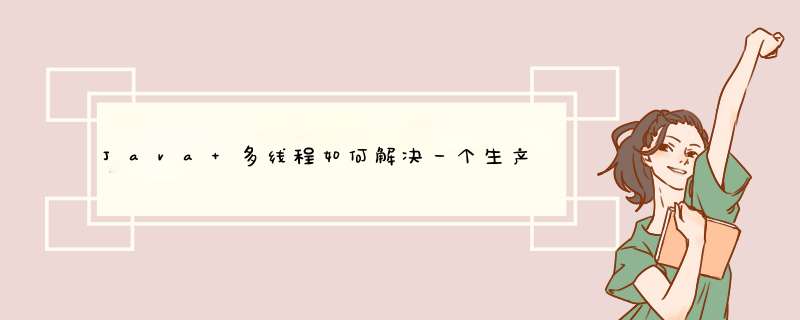
生产者与消费者是多线程同步的一个经典问题。生产者和消费者同时使用一块缓冲区,生产者生产商品放入缓冲区,消费者从缓冲区中取出商品。我们需要保证的是,当 缓冲区满时,生产者不可生产商品;当缓冲区为空时,消费者不可取出商品。
关于上述问题,我们可以使用Object类中 wait()与notify()方法。
wait()方法用在以下场合:
1.当缓冲区满时,缓冲区调用wait()方法,使得生产者释放锁,当前线程阻塞,其他线程可以获得锁。
2.当缓冲区空时,缓冲区调用wait()方法,使得消费者释放锁, 当前线程阻塞,其他线程可以获得锁。
notify()方法用在以下场合:
1.当缓冲区未满时,生产者生产商品放入缓冲区,然后缓冲区调用notify()方法,通知上一个因wait()方法释放锁的线程现在可以去获得锁了,同步代码块执行完成后,释放对象锁,此处的对象锁,锁住的是缓冲区。
2.当缓冲区不为空时消费者从缓冲区中取出商品,然后缓冲区调用notify()方法,通知上一个因wait()方法释放锁的线程现在可以去获得锁了,同步代码块执行完成后,释放对象锁。
public class ProAndCon {
//定义缓冲区的最大容量
public static final int MAX_SIZE=2;
//定义存储媒介 缓冲区
public static linkedList list = new linkedList();
//内部类 生产者
class Producer implements Runnable{
@Override
public void run() {
synchronized (list) {
//仓库容量已经达到最大值
while(list.size() == MAX_SIZE) {
System.out.println(
"仓库已满,生产者"+Thread.currentThread().getName()+"不可生产");
try {
list.wait();//线程阻塞
} catch (InterruptedException e) {
e.printStackTrace();
}
}
list.add(1);
System.out.println(
"生产者"+Thread.currentThread().getName()+"生产,仓库容量为:"+list.size());
list.notify();//唤醒阻塞线程
}
}
}
//内部类 消费者
class Consumer implements Runnable{
@Override
public void run() {
synchronized (list) {
//仓库为空
while(list.size() == 0) {
System.out.println(
"仓库为空,消费者"+Thread.currentThread().getName()+"不可消费");
try {
list.wait();//线程阻塞
} catch (InterruptedException e) {
e.printStackTrace();
}
}
list.removeFirst();
System.out.println(
"消费者"+Thread.currentThread().getName()+"消费,仓库容量为:"+list.size());
list.notify();//唤醒阻塞线程
}
}
}
public static void main(String[] args) {
ProAndCon proAndCon = new ProAndCon();
Producer producer = proAndCon.new Producer();
Consumer consumer = proAndCon.new Consumer();
for (int i = 0; i < 10; i++) {
Thread pro = new Thread(producer);
pro.start();
Thread con = new Thread(consumer);
con.start();
}
}
}
运行结果:
欢迎分享,转载请注明来源:内存溢出

 微信扫一扫
微信扫一扫
 支付宝扫一扫
支付宝扫一扫
评论列表(0条)